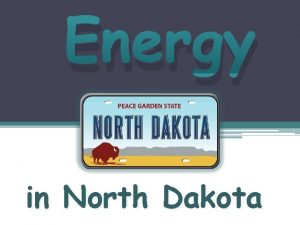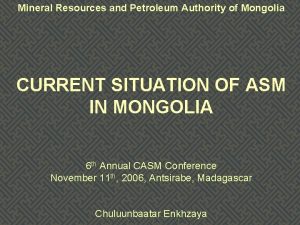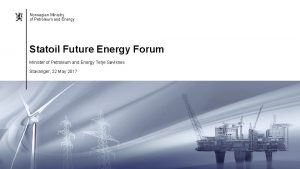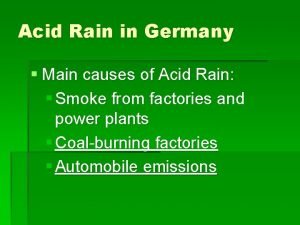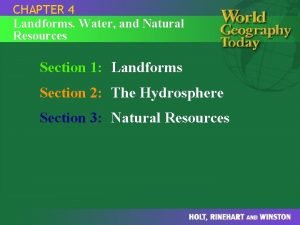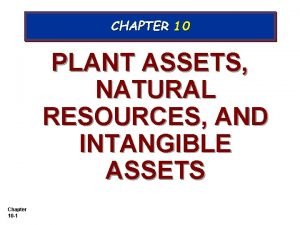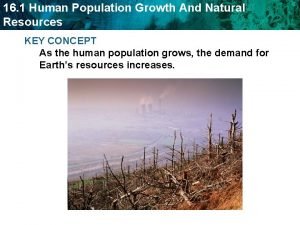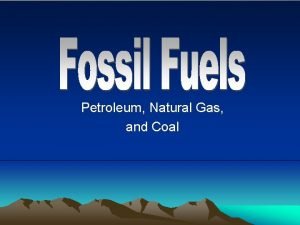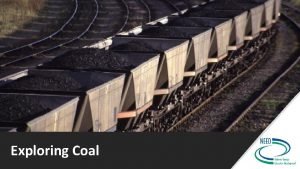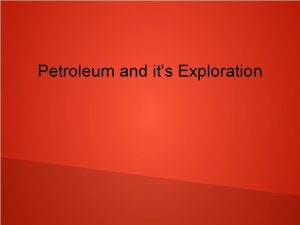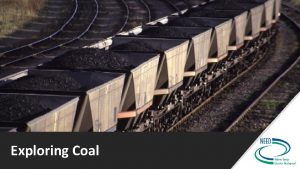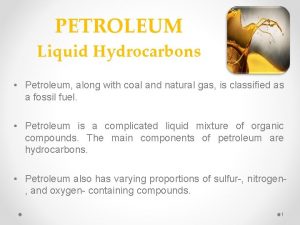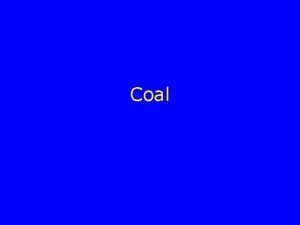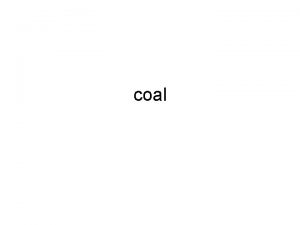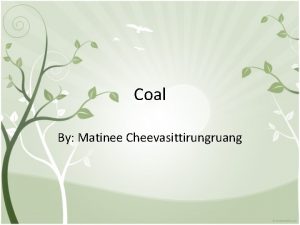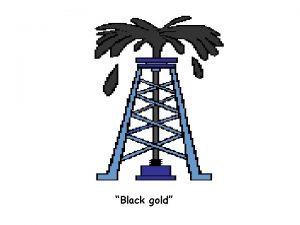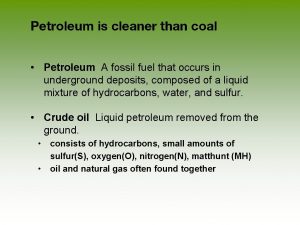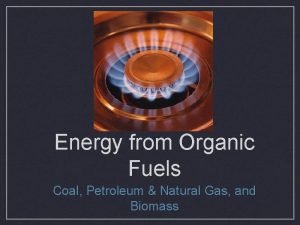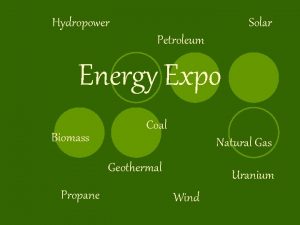Energy Resources Energy resources coal petroleum and natural














- Slides: 14

Energy Resources

Energy resources: coal, petroleum, and natural gas • Considered fossil fuel because derived from remains of plants and/or animals • Composed mostly of carbon and hydrogen • Energy derived from the stored energy of living organisms • Energy released through combustion • Combustion releases CO 2 and pollutants to atmosphere

Coal • Coal – organic sedimentary rock made from plant remains in a low-oxygen environment – Mainly used to in coal-fired electric generating plants – Significant pollutants given off when burned – Reserves should last until ~2200 AD – Forming much slower than consumption rate

Fig. 5. 17, p. 108

Petroleum • Petroleum – liquid hydrocarbon formed from organic residue of plants and animals. – Burial in mud, slow heating – Source rock – typically an organic shale – Oil traps – folds or other rock structures that trap rising petroleum – Reservoir Rock – permeable rock (e. g. sandstone, limestone) that holds oil in pores

Fig. 5. 19 a, p. 109

Fig. 5. 19 b, p. 109

Fig. 5. 19 c, p. 109

Fig. 5. 20, p. 110

Extraction of Petroleum • Extraction – companies drill wells into reservoir rock – Wells getting deeper – Much oil too viscous to pump • Secondary recovery – injection of water • Tertiary recovery – use of superheated steam and/or surfactants – Found in hostile / sensitive places • Open sea floor, ANWR, Middle East

Natural Gas • Natural gas – forms when source rock rises above 100°C – Often found with oil – Mainly methane, used as fuel without processing – Coal bed methane – associated with coal seams • Depletes water table • Is often saline and poses pollution hazard

Nuclear fuels and reactors • Nuclear fuels – radioactive isotopes to generate electricity • Fission reactors (branching chain reaction) – Fuel rod – Control rods – Heat exchangers – Powers steam turbine

Nuclear fuels and reactors • Processing and using nuclear fuels creates radioactive wastes • Used fuel could be recovered, but in the US it is not done. – Disposal of fuel rods • Hazards: Three-mile Island & Chernobyl

Fig. 5. 28, p. 117
 Petroleum and natural gas formation
Petroleum and natural gas formation Mineral resources and petroleum authority of mongolia
Mineral resources and petroleum authority of mongolia Statoil ministry of petroleum and energy
Statoil ministry of petroleum and energy Coal and acid rain
Coal and acid rain Research fund for coal and steel
Research fund for coal and steel Natural income
Natural income Petroleum engineering pros and cons
Petroleum engineering pros and cons Pedec
Pedec Chemical and petroleum solutions
Chemical and petroleum solutions Plant assets natural resources and intangible assets
Plant assets natural resources and intangible assets Some natural resources such as wheat and cattle are
Some natural resources such as wheat and cattle are Landforms and natural resources
Landforms and natural resources Natural resources from landforms
Natural resources from landforms Accumulated depreciation straight line method
Accumulated depreciation straight line method Natural resources and population growth
Natural resources and population growth
